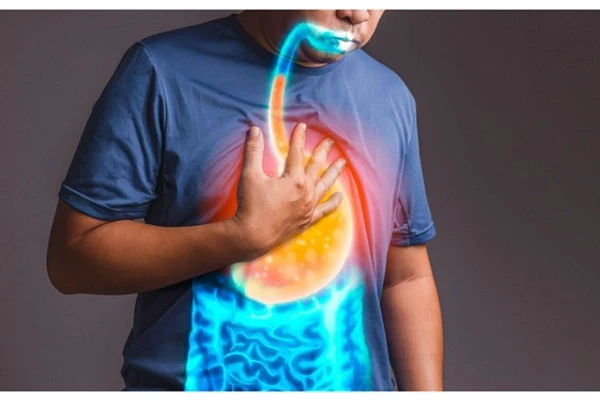
Select the option that best fits you.


Do you experience heartburn, chest pain, or indigestion? Afraid your food might just come back up your throat after eating and cause an embarrassing situation at the dinner table? You may be experiencing a health condition like gastritis or GERD.
But wait, is gastritis the same thing as GERD? Nope! While both involve inflammation, the key difference between gastritis vs. GERD is where that inflammation occurs in your GI tract. Gastritis has to do with inflammation in the stomach while GERD pertains to inflammation in your esophagus.
Down to learn more about gastritis vs. GERD? Let’s get into the breakdown of these two similar but separate conditions.
Gastritis refers to inflammation of the stomach lining. There are a couple of different types of gastritis.
Gastritis symptoms include:
Digestive conditions like Crohn’s disease and celiac disease have been linked to gastritis. The common theme is that they all relate to inflammation of your stomach lining.
Not treating gastritis can result in stomach ulcers or bleeding. And in more serious cases, erosive gastritis can occur, which includes symptoms like vomiting blood or black stools. Erosive gastritis is strongly associated with stomach cancer.
While gastritis involves inflammation of the stomach, GERD occurs when your esophagus becomes inflamed. Some think GERD is just simply having acid reflux but it's a little deeper than that.
You see, the lower esophageal sphincter (LES) is a muscle responsible for filtering food into the stomach and preventing food from flowing back up into the esophagus. Sometimes, your LES slacks on the job, allowing acid to come back up into the esophagus. The end result is symptoms like:
One or two episodes of this are considered your regular old acid reflux. But when you experience frequent episodes (i.e. two or more per week), it’s categorized as GERD. Short for gastroesophageal reflux disease, it’s a more chronic form of acid reflux. Drop the “d” off of GERD and you have the normal acid reflux.
Similar to gastritis, Lifestyle habits are at the root of gastritis. Smoking, drinking alcohol, using NSAIDs, being overweight, and indulging in fatty or spicy foods can increase your risk of developing GERD.
When it comes to gastritis vs. GERD treatment, there are a lot of similarities, especially when it comes to the foods you eat and certain lifestyle habits.
To prevent and reduce gastritis and GERD symptoms, cut back on the following foods:
Not only can cutting back on certain foods prove beneficial but eating smaller meals throughout the day can help prevent acid buildup. It’s also best to quit smoking, not drink excessive amounts of alcohol, and limit your use of NSAIDs.
Finding healthy ways to deal with stress and calm your mind, like yoga (try these 13 yoga stretches) or mindfulness meditation can also help. Same with starting an exercise regimen and getting in shape. It can do wonders for your health. And not just physically, but it can have a positive impact on mental health too.
Outside of diet and lifestyle factors, here are some other methods to reduce or prevent stomach acid you can bring up with your doctor:
Even though they’re thought of as interchangeable, there is one key difference between gastritis vs. GERD. And that’s where the inflammation takes place in your body.
With gastritis, you’re looking at inflammation in the stomach, while GERD involves inflammation in your esophagus. Also, keep in mind that GERD is a more chronic form of acid reflux.
Fortunately, certain lifestyle factors and eating habits that you have a lot of control over—like limiting the use of alcohol, quitting smoking, cutting back on fried and fatty foods, and staying away from fruits and vegetables with a high acid content—can help you reduce and prevent gastritis and GERD symptoms.
Did you know there are literally TRILLIONS of microbes living in your gut? And that these microbes influence not only gut health but a variety of other factors—from immune health to weight loss and mental health?
For this reason, it might be worth getting your gut tested. Read this blog post on gut health tests to get up to speed quick on everything you should know!
We can support you on the path to better wellness by providing you with the information you need to start the conversation, and we can provide tailored support for your provider.
